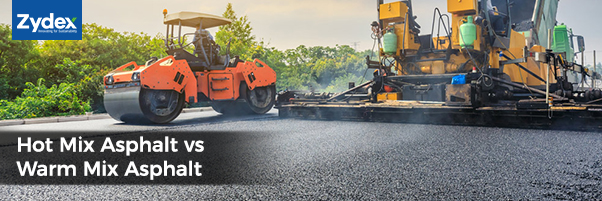The main difference between hot mix asphalt and warm mix asphalt is how they’re made.
Hot mix asphalt (HMA) is heated up to around 300 degrees Fahrenheit in a special oven to help reduce the curing time on the road. Warm mix asphalt (WMA) uses a process called “adhesive bonding” to create an even, strong bond between the aggregate and binder that allows it to be put down at about 180 degrees Fahrenheit without cooling.
HMA is produced and transported at a higher cost than WMA because of the higher temperatures needed to prevent it from solidifying.
Warm mix asphalt is more environmentally friendly than hot mix because it uses less fuel. The typical amount of fuel used to produce 1 ton of hot mix asphalt is 8 gallons, while with warm mix only 3.2 gallons is needed. Fuel consumption during WMA manufacturing is typically reduced by 20%.It also has a lower carbon footprint than hot mix, which means that not as much carbon dioxide is released into the air during production.
The reason warm mix asphalt can be placed at a lower temperature is because it is less viscous or thick than hot mix asphalt and therefore easier to apply at a lower temperature.
Construction crews can pave at lower temperatures, which allows to open the pavement for traffic sooner and lessens traffic gridlocks. The window for paving is widened and this results in the extension of the paving season, especially in colder climatic geographies.
On certain days when the air quality is bad, paving activities are halted, thereby delaying the process of paving. WMA also produces lesser emissions, making it a possibility to construct pavements on such non-attainment days. Also, working conditions are a lot better with WMA. Both at the production plant and on the building site, crews inhale lesser smoke and dust. This decrease is especially significant in tunnels where ventilation is lesser.
It has been utilized effectively in a wide scope of pavements with varying thicknesses. It is sufficiently strong to withstand high traffic demands. Warm Mix Asphalt has been utilized in a wide range of asphalt layers: dense-graded, stone matrix, porous, and mastic asphalt. Numerous WMA advances are available in the market, so the decision on the type of WMA can be adjusted according to the temperatures and materials required.
WMA has been utilized effectively in Europe for over 10 years. In the United States, WMA projects are presently in excess of 40 States.







